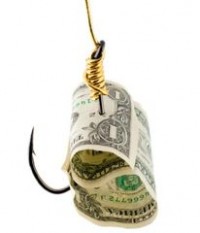Of Penguins, linkbait, and the user experience: #SEO best practices
It’s the sound of Google finally dropping the other shoe.
Google distinguished engineer and head of web spam, Matt Cutts, announced yesterday that Google’s much-anticipated Penguin 2.0 has arrived. In his blog post, Cutts said “…the rollout is now complete…” and that “[a]bout 2.3% of English-US queries are affected…”
Cutts went on to say that the Penguin update has also finished rolling out for other languages worldwide.
For those SEOs, webmasters, and site owners that had taken heed and cleaned up their site content and backlink profiles beforehand, this “…next generation of the Penguin webspam algorithm…” shouldn’t cause any problems (although there is always a remote chance of collateral damage with any algo update).
More to the point, those who never engaged in any spammy linking or keyword-stuffing practices in the first place, and instead focused on providing a valuable user experience, shouldn’t be overly anxious about the Penguin 2.0 launch.
Would it surprise you to know that before Panda – much less Penguin – was even a twinkle in Google’s eye, Heather was talking about the need to create quality content focused on the persona-defined reader? And encouraging SEOs and site owners to move beyond linkbait?
Me neither.
So as a nod to Penguin 2.0’s arrival, and as a shout-out to Heather for her vision and passion, here’s a mashup of her written and video posts around Google’s Penguin updates and SEO copywriting best practices… Enjoy!
 SEO content strategies for Google’s Penguin Update
SEO content strategies for Google’s Penguin Update
From this video post published just over a year ago when the first Penguin update hit, Heather’s counsel retains its relevancy. It is every bit as applicable to this second Penguin rollout as it was to the first!
Her message? Do the right thing and don’t fear the Penguin.
 Going beyond linkbait – why you need good, original content
Going beyond linkbait – why you need good, original content
In this post written in the fall (October) of 2009, long before the arrival of those cute black-and-white animal updates, Heather urges SEO content writers and online businesses to write for their audience, not for SEO’s sake.
“…better search rankings, better conversions and a better connection with your customers. And at the end of the day, isn’t that what it’s all about?”
 How to stop worrying about Google updates…and learn to love writing really great SEO copy!
How to stop worrying about Google updates…and learn to love writing really great SEO copy!
Here is a second video post Heather addressed to the Google-stressed, written after Matt Cutts warned that the next Penguin update would be “jarring” to SEOs and webmasters.
Published in August of 2012, here Heather encourages site owners to move past their Google-fear and learned helplessness, and their ensuing content generation paralysis.
“…instead of being all fearful about what Google is going to do next, think of what’s going on as an opportunity: Good content is still good for Google.”
 Does your site suffer from “content mullet” syndrome?
Does your site suffer from “content mullet” syndrome?
Remember those mullets from the 70’s and early 80’s? You know – “business up front, party in the back”?
Once upon a time they were considered hip, even attractive. But today…not so much.
The same goes for your site content. Tune in to this video post as Heather explains what a “content mullet” looks like, and what to do about it.
 SEO keyword density: lose this relic and adopt best practices
SEO keyword density: lose this relic and adopt best practices
Know how to make Heather grind her teeth? Ask her about “keyword density”…
In this video post published exactly two years’ ago today, Heather explains why there is no such thing as keyword density anymore.
Unless you’re stuck in a time warp and writing content for Alta Vista rankings, it’s time to put this SEO bone down. Really.
“You can party like it’s 1999, but don’t write SEO copy that way!”
image thanks to cnystrom (Chris Nystrom)
Learn SEO copywriting best practices at 20% off! Register for the SEO Copywriting Certification training by June 1st, using code CELEBRATE


I liked the part explaining about the techniques which can be used to be in sync with the latest changes done by google.
Thanks for the great and helpful insights.